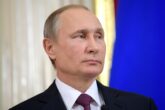September 08, 2021
Zapad-2021: What to Expect From Russia’s Strategic Military Exercise
Zapad-2021 is not just approaching. It’s already here. Zapad, meaning “west,” is Russia’s Strategic Command’s-Staff Exercise, scheduled for Sept. 10–16. This exercise focuses on Russia’s Western Military District and Belarus and includes areas under the Northern Fleet’s Joint Strategic Command. Strategic exercises of this type are capstone training events for the Russian military and rotate every year (since 2009) between zapad (west), vostok (east), tsentr (center), and Kavkaz (Caucasus). Consequently, Zapad takes place every four years. Each exercise focuses on one of these strategic directions and is led by that military district’s Joint Strategic Command. Zapad intermingles military training for regional or large-scale war, demonstrations of capability, and political signaling.
Annual strategic exercises such as Zapad allow the Russian General Staff to further develop operational concepts, test Russian military and civilian integration, experiment with force structure, reserve mobilization, or logistical elements. Over the years, Zapad has become more routinized, but it remains an important demonstration of military power aimed at helping maintain coercive credibility vis-a-vis Washington. Even though the Russian military sees itself as relatively inferior in a regional or large-scale war with NATO, Zapad is meant to convey the potential costs and escalation risks of such a conflict. This year’s exercise will also illustrate Russia’s ability to defend its interests in Belarus and deploy substantial military power onto the country’s territory.
Major exercises are indeed a time for vigilance, and caution, but they also present opportunities for Western analysts and intelligence services.
Zapad-2021 will be larger than the 2017 iteration. It takes place against the backdrop of a political crisis in Belarus, and an ongoing confrontation between Russia and NATO, which has resulted in intensifying military exercises, deployments, and activity in Europe. While Russian exercises often engender a sense of foreboding and anxiety across NATO member states on its borders, Zapad-2021 has not been subject to the same media sensationalism that characterized coverage in the summer of 2017. The Russian military has previously used exercises to rehearse military plans against specific neighbors (the Russian-Georgian War in 2008) and to mask large troop movements for the seizure of Crimea in 2014. The peak time for annual Russian military training events has historically been autumn. However, recent years have witnessed more of a year-round approach to training exercises as well as higher levels of readiness across the force.
Major exercises are indeed a time for vigilance, and caution, but they also present opportunities for Western analysts and intelligence services. Exercises like Zapad provide useful updates on the state of the Russian armed forces and Moscow’s ability to generate and deploy combat power in the region of greatest concern to U.S. planners, as well as on the evolution of capabilities, operational concepts, and integration across the force. Over the years, Zapad has become an increasingly scripted event, with many of the movements pre-planned and exercised in advance, and has evolved to include preparatory activity, prepositioning of forces, and exercises in July and August that lead up to the main event in September. Yet the exercise remains a useful snapshot for those who regularly observe Russian military developments and look at the state’s capacity to mobilize, generate reserves, provide logistical support for large formations, etc.
Read the full article from War on the Rocks.
More from CNAS
-
Trump ‘Humiliated’ as Putin Sends Clear Message That He Doesn’t Care About US
"Putin is not playing ball." Putin's Palm Sunday attack on Sumy is "embarrassing for the White House" as it comes just days after Steve Witkoff met with the Kremlin, says adju...
By Jim Townsend
-
The Hidden Past and Uncertain Future of the U.S. and Ukraine with Celeste Wallander
Under the Trump administration, U.S. support for Ukraine is no longer guaranteed. President Trump's pause on aid and intelligence to Ukraine in March may have been brief, but ...
By Andrea Kendall-Taylor, Jim Townsend & Celeste Wallander
-
Is Russia Under Pressure?
Since 2014, the United States and its allies have provided increasing military support to Ukraine while imposing more and tougher economic sanctions on Russia, especially sinc...
By Jeffrey Edmonds
-
Sharper: Russia and the Axis of Upheaval
Russia’s 2022 invasion of Ukraine served as a dramatic catalyst for strengthening the global axis of upheaval. To sustain its war effort, Russia has imported Iranian weapons a...
By Charles Horn




